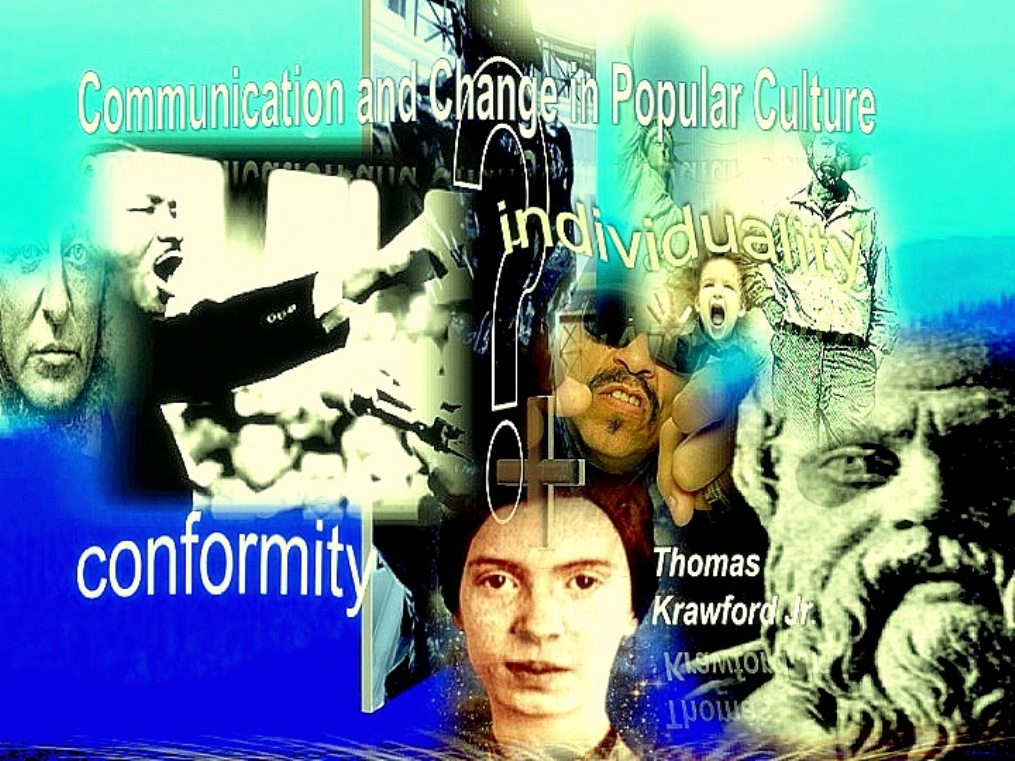Control begins as a necessity of error in perspective and illusion such that, error as any change in general system equilibrium, is part of the process in establishing the the Subject as Inherent. The Thermodynamic exchange of variables of heat, is the second part. Establishing a field of counter-inter-positional elements of that which is, that which is not that which is, and that which binds them both while being defined by neither is the foundation of that which is inherent.
The Subject, that which is inherent is Necessary.
Object, that which is constructed from that which is inherent, is Probable. This General Model is the basis upon which all systems derive overall control.
For an understanding of specific control we are left with the Concept of Constancy.
We know, because of the Third Law of Thermodynamics, Absolute Zero cannot exist Heckert 2006. Therefore heat is a constant. We also know that because of Newton's Inverse Square Law and the equivalence principle Wikki 2010, gravity too is a constant. However, in terms of general system occurrence we know we can infer cause and effect as a continuum.
"Cause and effect: there is probably never any such duality; in fact there is a continuum before us, from which we isolate a few portions - just as we always observe a motion as isolated points, and therefore do not properly see it, but infer it. The abruptness with which many effects take place leads us into error; it is however only an abruptness for us. There is an infinite multitude of processes in that abrupt moment which escape us. An intellect which could see cause and effect as a continuum, which could see the flux of events not according to our mode of perception, as things arbitrarily separated and broken - would throw aside the conception of cause and effect, and would deny all conditionality (Nietzsche 112).
Therefore, as a continuum in much the same fashion as the perception of color, there is a Constancy of Occurrence of either Subject or Object in every system where there is a Necessity of Error in perspective and illusion.A reading of Wittgenstein, in part, gives us this formulation:"...We use the word composite...in an enormous number of different and differently related ways...what are the simple constituent parts of which reality exists...what does it mean to say that we can attribute neither being nor non being to elements...it makes no sense to speak of an element's being (non-being) when everything we call destruction lies in separation...of elements...the concept of 'number' is defined s the logical sum of...individual interrelated concepts...it need not be so...For I can give the concept 'number' rigid limits...but I can also use it so that the extension of concepts is not closed by a frontier... (46, 47,50,68)
The Constancy of Occurrence, then, in relation to the idea of integration suggested by our number model (-1 0 1) is where we also derive our argument for the Joint, Direct and Inverse sub parameters of Subject Object integration as an ongoing and eternally reoccurring Interposition
At this point, the question of textual production and power must be addressed. In doing so, we must first establish what we further argue are the general parameters common to all thought and behavior.
Therefore, we have, foremost, the concept of text and textual production. First I affirm Margaret Paternak's observation regarding Michel Foucault namely that:
"...at his best, Fouccault is one of the most powerful critics of liberal practices...but...where liberalism equates the political and legal dimensions of power with the state...Foucault fuses the social and political dimensions of power with the apparatus of the state (1987).Yet, what Foucault does accomplish for our argument is to furnish us with an armature of external structure for our General Theory of Thought and Behavior. As the following diagram illustrates is, according to his reading of Jeremy Bentham's Panopticon :
...from the enclosed disciplines...an immediately generalizable mechanism of panopticism...serving as an intermediary between them, linking them together...making it possible to bring the effects of power...to the most distant elements...(235)This external structure then, provides for us an understanding of The Greatest Common General Circumstance of Subject or Object Occurrence as a joint, direct and inverse possibility in the constitution of what is and is not perceived about that structure as well as the actuality of integration facilitated by all avenues of power and probable power at work within a given system.
Again, in reference to to the model, our concept of The Least Common Individual Result of Subject Object Integration comes to us from a reading of Jaques Derrida's Archive Fever wherein the author describes and discusses his concept of The One.
Namely, that which is must always oppose that which is not. In any given system then, when we speak of Control, we must first realize that all systems are controlled first according to this basic precept. Whenever we seek to exert external control in any system then, we must first come to grips with that element, also inherent in any given system, that contains neither counterpostional element, yet both are in whole or in part defined by....The One as self-repetition can only repeat and...affirm and...engage itself in this repetition...it orders to promise...self confirmation in a yes, yes...the anarchive in short...carries the law in its tradition...the substrate and the subject of law...(78).Although apparently counter intuitive, the fundamental cornerstone of control in any system of thought and behavior , is to a greater or lesser degree, a negation of that which is in relation to that which is not that which is.This brings us back to our original diagram of inherency .
Applications
When we talk about a General Model of Thought and Behavior we, at least I am, tempted to plunge back through history and literature and take a another look at what supposedly happened and decide for myself if I do indeed agree and why or why not. As tempting as that project sounds, we will save that journey for future posts. Instead, for the purposes of this post we will close by briefly discussing contemporary issues and their relevance to the theory we have discussed.
Cutting thriough all the jargon and references, ultiamtely what we are saying here is that:
1) All situations are the result of a existing system.
2) All situations as the result of a system of interrelation have at their core, one central issue around which the entire situation evolves and exists.
and 3) Control in any situation is dependent upon isolating that core element and effectively moderating its direction of effect to the overall system.
For example, in the Gulf Oil spill Crisis what is the central issue? In such a complex problem, depending on your approach and your needs at the time, there is more than one core issue involved in this situation.
The central issue in the Spill itself is the area being displaced at the point of eruption.
We know that the blowout preventer at the bottom of the ocean in that region is malfunctioning although relatively intact. We also know that the Blow Out preventer system is based on an Acoustic Pattern Recognition Software based operational system. Since the majority of the leakage is coming from damaged or ruptured riser lines, then it is safe to assume that in order to regain control of he Blow Out Preventer Device, we need to re enable that device to receive a new set of instructions.
Since the Core issue, is the Preventer itself, and the device is still relatively intact, repairing the hardware and software package to receive a new set of proper instructions, is one best way to go at this point. An engineering problem? No. An Electrical and Engineering problem? Most probably.
Recollection of the already spilled oil is another matter entirely. In this situation, our core issue is not the oil spill itself, it's the behavior of the oil while it is in the water that's the problem.
Control the flow of ocean current and you inevitably control the damaging effects of spilled oil in the environment.
An Emergency Oil Reclamation and Anti-Spill Device as depicted in the following illustration that would impede the current flow is the best way towards regaining control of the current situation in terms of environmental clean-up.
Another example of focusing on the core issues of a given situation can be found in the current Arizona Border situation. In that particular instance, it is commonly believed that illegal immigration is the central issue. But in my theory of thought and behavior, illegal immigration is only one consequent of the overall reality of circumstance. In my opinion, the central issue invoved in so called illegal immigration is not in those who choose to come across the border no matter what the cost. It is in the BIG MONEY that finances those illegal crossings. That, in my opinion, is the central issue to the problem at the border. Stop the flow of big money there,and you stop the illegal flow of immigration at the Arizona border.
In my own personal narrative, I have been trying for quite some time to get a position as a student teacher in Speech here in Ann Arbor. As of this writing, sad to say there as been NO SUCCESS. However, in my general theory of thought and behavior, the central issue here, in my particular situation, is not in expecting the College of Education at Eastern Michigan University to find a place for me, although, that wold be nice. The central issue here in my situation, is how committed I am to the profession of education.
According to my theory of thought and behavior, what I need to do is get involved and remain involved in anything remotely involving education. Volunteer: seek out any and all tutoring opportunities in my field. Actively look into Summer opportunities to get involved in Children's Theatre or any writing workshops that may be available.
Get enough real life experience, where you can, if you need to, go an alternate route towards Teacher Certification.
The point is, in the General Theory of Thought and Behavior I am proposing the one overriding element inherent in any situation we may come across, is that there is usually one inherent condition upon which the entire situation revolves.
Understanding what that core element is the key to control in any system of interrelation, we may encounter.
For our next post we will discuss the system of counteraesthetics which this general approach to thought and behavior strongly suggests.
Thank you and good night.


+of+IMG_9264.jpg)













 In the diagram of the hydrogen atom we see on the one hand the symmetrical nature of the arrangement we propose P=1 N=0 and since the only negative constituent in the arrangement is the opposite of the only positive constituent, for our purposes we will denote this factor as -1.
In the diagram of the hydrogen atom we see on the one hand the symmetrical nature of the arrangement we propose P=1 N=0 and since the only negative constituent in the arrangement is the opposite of the only positive constituent, for our purposes we will denote this factor as -1.









